www.indiatimes.com
one ruppee
| ||||||||||||||||||||||||||||||||||||||||||||||||||||||||||||||||||||||||||||||||||||||||||||||||||||||||||||||||||||||||||||||||||||||||||||||||||||||||||||||||||||||||||||||||||||||||||||||||
| ||||||||||||||||||||||||||||||||||||||||||||||||||||||||||||||||||||||||||||||||||||||||||||||||||||||||||||||||||||||||||||||||||||||||||||||||||||||||||||||||||||||||||||||||||||||||||||||||
===============================================

WORLD COINS COLLECTION | RARE COINS IMAGES | OLD COINS COLLECTION
Bank of Hindostan, a Private Bank issued the first banknotes of India in 1770. The lowest denomination in early issued banknotes was Rupees Ten and the highest was Rupees Ten Thousand.
Bank of Hindostan - Sixteen Sicca Rupees







The early banknotes were exchanged for silver or gold coins or vice versa.

One Silver Rupee
One Gold Mohur
There were banknotes with denominations of Rupees Four, Rupees Fifteen and Rupees Sixteen.
Sixteen silver coins were equivalent to One Gold Mohur of equal weight. One Gold Mohur weighed 11.59 grams.
The earliest surviving issued banknote is by The Bank of Bengal – Two Hundred and Fifty Sicca Rupees note dated 3rd September 1812.
Bank of Bengal - Two Hundred and Fifty Sicca Rupees
OLDEST surviving Indian Bank Note - Serial No.108 dt. 3rd September 1812
Madras Government Bank - Two Star Pagodas
The Government of India took over the issue of banknotes in 1861 from the Private and Presidency Banks.
The Uniface or one-sided notes of Government of India were in circulation from 1861 to 1930.
Government of India - Twenty Rupees - Uniface with Portrait of Queen Victoria
The first Rupees Five notes were Uniface and issued in 1871 by Government of India.
Government of India - Five Rupees - Uniface with Green under print
The only notes to have serial numbers in all four corners were from the Uniface Note series.
Initially the Uniface Notes, notes with the Portrait of King George V & King George VI had the Circle of Issue printed on the notes.
Portrait Note of King George V - One Hundred Rupees - Cawnpore
Circles of Issue Cawnpore and Kurrachee are now spelt Kanpur and Karachi.
The only issued type that does not have a title on the note, either Government of India or Reserve Bank of India.
The only issued type that does not have a title on the note, either Government of India or Reserve Bank of India.
Portrait Note of King George VI - One Hundred Rupees - Kanpur
The notes of Rupee One were first issued in 1917 with the Portrait of King George V. 25% of these Rupee One notes were issued in a booklet of 25 notes.
Portrait Notes of King George V - One Rupee
Portrait Notes of King George V - A booklet of 25 One Rupee Notes

Portrait Notes of King George V - A bundle of 25 One Rupee Notes
The second issue of Rupee One notes dated 1935 took place in 1940 with the Portrait of King George V, who died in 1936.
The 1935 Rupee One is the only note with Serial Number on the reverse.
Portrait Notes of King George V - One Rupee - Serial Number on Reverse
The One Rupee note had the year inscribed in the image of the coin on the Reverse from 1917-1994.

Government of India - One Rupee - with Coin dated 1917
Government of India - One Rupee - with Coin dated 1990
There was an issue of Rupees Two Annas Eight or Rupees Two and a Half in 1918.
Portrait Notes of King George V - Rupees Two Annas Eight
The Reserve Bank of India was established in 1935 as a central note issuing authority.
The Rupee One notes of Government of India were treated in Government accounts at par with metallic coins.
The Secretary of the Finance Department, Government of India, signed these Rupee One notes.
Government of India - One Rupee
The first Rupees Two notes were issued in 1943 with the Portrait of King George VI.
Reserve Bank of India - Two Rupees - with Portrait of King George VI
Notes issued by Government of India and Reserve Bank of India were overprinted for use in Burma.
Reserve Bank of India - Five Rupees - Burma
Notes issued by Reserve Bank of India were overprinted ‘Government of Pakistan’ in 1947 at the Nasik Press for use in Pakistan until 1948.
Reserve Bank of India - Rupees Five with Government of Pakistan Overprint
Notes of Independent India were first released in 1949 in Rupee One and Rupees Ten and later in all denominations in 1950.
Government of India - One Rupee
Notes of all denominations issued by the Reserve Bank of India after independence have the Ashoka Pillar and the Seal of Reserve Bank of India.
Reserve Bank of India - Twenty Rupees
The Mahatma Gandhi Birth Centenary Commemorative Issue in 1969 is the only the commemorative issue by the Reserve Bank of India.
Reserve Bank of India - One Rupee - Mahatma Gandhi Commemorative Issue
Reserve Bank of India - Two Rupees - Mahatma Gandhi Commemorative Issue
Reserve Bank of India - Five Rupees - Mahatma Gandhi Commemorative Issue
Reserve Bank of India - Ten Rupees - Mahatma Gandhi Commemorative Issue
Reserve Bank of India - One Hundred Rupees - Mahatma Gandhi Commemorative Issue
Notes of denominations Rupees One Thousand, Rupees Five Thousand and Rupees Ten Thousand were demonetized in 1978.
Between 1978-1987, the highest denomination in circulation was Rupees One Hundred.
Reserve Bank of India - One Hundred Rupees
Notes of Rupees Five Hundred were re-introduced on 23rd October 1987 with the Portrait of Mahatma Gandhi.
Reserve Bank of India - Five Hundred Rupees with Portrait of Mahatma Gandhi
There is Braille feature in the Mahatma Gandhi Series notes for the visually challenged.
Reserve Bank of India - Twenty Rupees - Brialle Feature : a Rectangle above the Ashoka Pillar
Reserve Bank of India - Fifty Rupees - Brialle Feature : a Square above the Ashoka Pillar
Reserve Bank of India - One Hundred Rupees - Brialle Feature : a Triangle above the Ashoka Pillar
Reserve Bank of India - Five Hundred Rupees - Brialle Feature : a Circle / Dot above the Ashoka Pillar
After an interval of 22 years, notes of Rupees One Thousand were issued in 2000.
Reserve Bank of India - Rupees One Thousand - with Portrait of Mahatma Gandhi
Rupees One Thousand of Mahatma Gandhi series has Serial Numbers in two different colours.
The denomination in Hindi numeral appears in a Rupees Two note. The only instance in Republic India notes.
Reserve Bank of India - Two Rupees
Denominations of Rupees Five Hundred upwards to Rupees Ten Thousand were demonetized in 1946. The Denomination of Rupees One Thousand, Rupees Five Thousand and Rupees Ten Thousand were re-introduced from 1954 to be demonetized again in 1978.
Star or Replacement notes were issued from 2006.
Reserve Bank of India - Ten Rupees - Star or Replacement Note
The year of issue is printed on the reverse of the notes from 2005 onwards.
Reserve Bank of India - Five Rupees - 2010
Reserve Bank of India - Ten Rupees - 2006
Reserve Bank of India - Fifty Rupees - 2011
The only Governors of the Reserve Bank of India who did not sign a note are Mr. Osborne Smith and Mr. Ambegaonkar. However, Mr. Ambegaonkar signed the Rupee One Note as the Secretary, Ministry of Finance, Government of India.
The vignette of the Sailing Boat or Dhow remained on the reverse of the Ten Rupees for over 40 years.
Reserve Bank of India - Rupees Ten - Sailing Boat on the Reverse
There is only one instance of Republic India notes printed by the American Banknote Company in U.S.A. in 1997-98.
Notes of Government of India and The Reserve Bank of India of the same type that were in circulation in that period were printed in a different colour and issued for use in the Trucial and Gulf States of Kuwait, Bahrain, Qatar, Muscat and Oman from 1959-1966.
Government of India - One Rupee - used in Gulf
Reserve Bank of India - Five Rupees - used in Gulf
A special issue of Rupees Ten and Rupees One Hundred were issued in 1959 to Indian Haj Pilgrims for exchange with local currency in Saudi Arabia.
Reserve Bank of India - Ten Rupees - HAJ

Reserve Bank of India - One Hundred Rupees - HAJ
The Nizam of Hyderabad was given the privilege to print and issue their own currency in 1917-1918.
Osmania Notes of Hyderabad - One Rupee
The Princely State of Jammu and Kashmir had issued notes with limited circulatory liabilities in 1877.
The Princely States of Morvi and Dhrangadhra issued currency notes of limited liability known as Havala during the metal shortage experienced in World War I.
Morvi State Havala

Dhrangadhra State currency note
The shortage of metal during World War II necessitated 36 Princely States mostly in Gujarat, Rajasthan, Sind, Baluchistan and central provinces to issue paper tokens instead of coins, some with the value of One Pice or 1/192nd of a Rupee.

Cash Coupon of Princely State of Bundi
Cash Coupon of Princely State of Navalgad
Prisoners of World War I and World War II were issued coupons of denominations Half Anna to Ten Rupees for use within the Prison Camps.
Prisoners of War - Two Annas Coupon
The Colonial Territories of Portugal in Goa used notes issued by the Department of Public Finance initially and later Banco Nacional Ultramarino.
Governo Geral Do Estado Da India - Five Rupias
Banco Nacional Ultramarino issued notes in odd denominations of Escudos 30, 60, 300 and 600.

Banco Nacional Ultramarino - 60 Escudos
The Indo-French territory of Pondicherry used notes issued by the Banque De L'Indo-Chine for use in their colonial territories in India.
Banque De L'IndoChine - Fifty Rupees
 Republic India Coins, Proof Set, Currencies: Fake Indian Coins and Currencies - Part 3 - Fake Currencies
Republic India Coins, Proof Set, Currencies: Fake Indian Coins and Currencies - Part 3 - Fake Currencies================================================
 WORLD COINS COLLECTION | RARE COINS IMAGES | OLD COINS COLLECTION
WORLD COINS COLLECTION | RARE COINS IMAGES | OLD COINS COLLECTION WORLD COINS COLLECTION | RARE COINS IMAGES | OLD COINS COLLECTION
WORLD COINS COLLECTION | RARE COINS IMAGES | OLD COINS COLLECTIONworldcurrencyandcoins.blogspot.com
Here we have Complete Collection of Indian Old 10 Rupees Currency Notes
Old coins narrate Sino-Tamil story - The New Indian Express
https://www.newindianexpress.com › chennai › may
22-May-2012 — The Museum in Egmore has a collection of three coin hoards from China discovered in Tamil Nadu. Sundararajan said, “The first hoard of Chinese ...

en.wikipedia.org
pazhayathu.blogspot.com
Silver Rupee Coin of Aurangzeb of Chinapattan Mint. - Marudhar Arts
https://www.marudhararts.com › mughal-coins › buy
Full Description: Aurangzeb, Chinapattan, Silver Rupee, banker's testing mark on obv and on edge, 11.5g, 22.35mm, (KM # 300.25), about good, Scarce.
Silver Rupee Coin of Aurangzeb of Chinapattan Mint. - Marudhar Arts
https://marudhararts.com › mughal-coins › aboutus
Full Description: Aurangzeb, Chinapattan, Silver Rupee,1109 AH/42 RY, (KM# 300.25), (Date out of Flan), Scarce.

Malabar (Nan-pi)
The Nan pi country is in the extreme south west. From San fo tsi, one may reach it with the monsoon in a little more than a month. The capital of the kingdom is styles Mie-a-mo (Malabar) which has the same expression as the Chinese expression Lissi.
HOW THE CHINESE LEFT KERALA IN EARLY 16 TH CENTURY
Joseph the Indian, visiting Europe in the 16th century, accompanying Cabarl (Read the linked Cabral’s hostages) on his voyage back to Lisbon

Cathedral_of_Evora
states that the Moppilahs armed with the Zamorin’s backing destroys a Chinese settlement in Calicut over some trade dispute.
states that the Moppilahs armed with the Zamorin’s backing destroys a Chinese settlement in Calicut over some trade dispute.
According to Jospeh, the Chinese left Calicut after this slaughter and after taking revenge on the people (late 14th century) finally shifting base to Mailapatam[MODERN MYLAPOUR?] under King Narasinga towards the sea of Cengala (also recreating dwellings and scenery like Calicut – De Barros) and leaving behind only a colony of half castes
WHO WAS THIS KING NARSINGA?
an account of what Vijayanagara was like in A.D. 1504 - 14 in the narrative of Duarte Barbosa, who visited the city during that period.:-Speaking of the "Kingdom of Narsinga," by which name the Vijayanagar territories were always known to the Portuguese, Barbosa writes: "It is very rich, and well supplied with provisions, and is very full of cities and large township
--REF:------------------------------------------------------------------------------------------------------------
*PAGE 1084* goes on to describe Narsinga (*a view, 1588*), the kingdom in Southern India, otherwise termed Vijayanagara or Bisnagar. (Elsewhere, Münster provides a *map of the Deccan and the south (c.1588)*, and a *map of Taprobana (1574)* or Sri Lanka.) Münster then writes about Calicut, the principal town of Narsinga, and Canonor, a port on the Arabian Sea, in northern Kerala state. Cannanore carried on an important trade with Persia and Arabia in the 12th and 13th centuries. Until the 1700's it was the capital of the raja of Kolattiri. The page is illustrated with a woodcut picture of a South Indian flower
["Cosmographia" (1544)
by Sebastian Münster ON INDIA]LATER THE CHINESE MADE A CITY NEAR MODERN CHENNAI(OLD NAME MADRAS).CHENNAI NAME COMES FROM CHINA PATNAM
{CLICK AND READ A BOOK WRITTEN ABOUT CHINA PATNAM NEAR MODERN CHENNAI}
The ship of Sulaimān at chinapatan:-click and read:-http://books.google.com/books?id=1a89AAAAIAAJ&pg=PA33&lpg=PA33&dq=chinapatan&source=bl&ots=-wAuAGuHsY&sig=Tw2tyUmzbm0SxS3dxOjSsJ8gAoY&hl=en&ei=r9guTs_HGNGxrAesm_GZAw&sa=X&oi=book_result&ct=result&resnum=9&ved=0CE4Q6AEwCA#v=onepage&q=chinapatan&f=false

'chenna patan' can be seen just north of 'madras patan'- 1750 map of India-east coast
-
{CLICK AND READ A BOOK WRITTEN ABOUT CHINA PATNAM NEAR MODERN CHENNAI}
The ship of Sulaimān at chinapatan:-click and read:-http://books.google.com/books?id=
1a89AAAAIAAJ&pg=PA33&lpg=PA33&dq=
chinapatan&source=bl&ots=-wAuAGuHsY&sig=
Tw2tyUmzbm0SxS3dxOjSsJ8gAoY&hl=en&ei=r9guTs
_HGNGxrAesm_GZAw&sa=X&oi=book_result&ct=
result&resnum=9&ved=0CE4Q6AEwCA#v=onepage&q
=chinapatan
1a89AAAAIAAJ&pg=PA33&lpg=PA33&dq=
chinapatan&source=bl&ots=-wAuAGuHsY&sig=
Tw2tyUmzbm0SxS3dxOjSsJ8gAoY&hl=en&ei=r9guTs
_HGNGxrAesm_GZAw&sa=X&oi=book_result&ct=
result&resnum=9&ved=0CE4Q6AEwCA#v=onepage&q
=chinapatan
- 1701 - 1702
- rupee
- Chinapatan
- 23.0
- 11.52
- 1705 - 1706
- rupee
- Chinapatan
- 11.2
- 1713 - 1714
- rupee
- Chinapatan
- 11.18
- KM ---
- rupee
- Chinapatan
- KM 279, Pr 114
- rupee
- Chinapatan
- KM 279, Pr 114
- Chinapatan
- 13.0
- 3.407
- KM 284-85
- Chinapatan
- KM 284-85
- Chinapatan
- KM 284-85
- 1709 - 1710
- rupee
- Chinapatan
- 22.0
- 11.35
- KM ---
- 1700 - 1701
- rupee
- Chinapatan
- 11.59
- 1717 - 1718
- rupee
- Chinapatan
- 11.51
Displaying records 1 to 16 of 16 total results.
CLICK TO SEE BIGGER MAP OF MADRAS 1800>>
just north of pondicherry is sadras patan and north of is madras patan;
chenna patan just north of madras pattan not shown in this map made later in 1800
| Ref # | Description | Image | ||
| IN-7 | 10 Rupees ND (KGV) | [Obverse] | ||
| IN-9 | 50 Rupees ND (KGV) | [Obverse & Reverse] | ||
| IN-18 | 5 Rupees (1937) (King George VI) | [Picture & Info] | ||
| IN-25 | 1 Rupee 1940 (King George VI) | [Obverse] [Reverse] | ||
| IN-37 | 10 Rupees (1949-57) Sailboat, Lions | [Obverse] [Reverse] | ||
| IN-39 | 10 Rupees (1957-62)(sailboat) | [Obverse] [Reverse] | ||
| IN-45 | 100 Rupees (1962-67) (dam) | [Obverse & Reverse] | ||
| IN-51b | 2 Rupees (1967-70) (Asoka column; Bengal tiger) | [Picture & Info] | ||
| IN-53A | 2 Rupees (1985-90) (Asoka column; Bengal tiger) | [Picture & Info] | ||
| IN-55 | 5 Rupees (1970-75) (Antelope) | [Obverse] [Reverse] | ||
| IN-59 | 10 Rupees (1970-75) (sailboat) | [Obverse] [Reverse] | ||
| IN-60A | 10 Rupees (1983-84) (sailboat) | [Obverse & Reverse] | ||
| IN-64 | 100 Rupees (1977-81) (dam) | [Obverse] [Reverse] | ||
| IN-66 | 1 Rupee (1969-70) (Centennial of Birth of Gandhi) | [Picture & Info] | ||
| IN-77d | 1 Rupee (1966-80) (One Rupee coin, 1968) | [Picture & Info] | ||
| IN-77j | 1 Rupee (1966-80) (One Rupee coin, 1972) | [Photo] | ||
| IN-78A | 1 Rupee 1989 (coin design) | [Picture & Info] | ||
| IN-79 | 2 Rupees (1976) (Earth; space craft) | [Obverse & Reverse] | ||
| IN-80 | 5 Rupees (1997-) (farmer ploughing, sunrise) | [Obverse & Reverse] | ||
| IN-80p | 5 Rupees (1975-2002) (farmer tilling, sunsetting) | [Picture & Info] | ||
| IN-81f | 10 Rupees (1982-85) (Peacocks in a mango tree) | [Obverse] [Reverse] | ||
| IN-81h | 10 Rupees (1985-90) (Peacocks in a mango tree) | [Picture & Info] | ||
| IN-82 | 20 Rupees (1983-84) (buddhist wheel) | [Obverse & Reverse] | ||
| IN-84 | 50 Rupees (1983-84) (Parliament house) | [Obverse & Reverse] | ||
| IN-85A | 100 Rupees (1983-84) (agricultural work) | [Obverse] [Reverse] | ||
| IN-86 | 100 Rupees (1979) (agriculture) | [Obverse & Reverse] | ||
| IN-88A | 5 Rupees (2002) (Mahathma Gandhi; farmer ploughing) | [Picture & Info] | ||
| N-89c | 10 Rupees (1996-2006) (Gandhi; rhino, tiger, elephant) | [Picture & Info] | ||
| IN-89c | 10 Rupees (1996-2006) (Gandhi; rhino, tiger, elephant) | [Obverse & Reverse] | ||
| IN-90 | 50 Rupees (1996) (Mahatma Gandhi; Parliament) | [Picture & Info] | ||
| IN-91 | 100 Rupees (1996) (Gandhi; Himalaya) | [Picture & Info] | ||
| IN-93 | 500 Rupees (2000) (Gandhi and his followers) | [Picture & Info] | ||
| IN-94 | 1000 Rupees (2000) (Mahatham Gandhi; Indian Economy) | [Picture & Info] | ||
| IN-95 | 5 Rupees (2001) (Mahatma Gandhi; tractor) | [No image] | ||
| IN-95A | 10 Rupees (2010) (Mahatma Gandhi; wild animals) | [Picture & Info] | ||
| IN-96 | 20 Rupees (2001) (Mahatma Gandhi; seashore view) | [Picture & Info] | ||
| IN-97 | 50 Rupees 2007 (Mahatma Gandhi; Indian Parliament) | [Picture & Info] | ||
| IN-98 | 100 Rupees 2007 (Gandhi; Himalaya mountains) | [Picture & Info] | ||
| IN-99 | 500 Rupees 2008 (Mahatma Gandhi and his followers) | [Picture & Info] | ||
| IN-100 | 1000 Rupees 2009 (Mahatma Gandhi; Economy of India) | [Picture & Info] | ||
| IN-106 | 500 Rupees 2013 (Mahatma Gandhi and his followers) | [Picture & Info] | ||
| IN-109 | 10 Rupees 2018 (Mahatma Gandhi; Konark Sun Temple) | [Picture & Info] | ||
| IN-110 | 20 Rupees 2019 (Mahatma Gandhi; Ellora Caves) | [Picture & Info] | ||
| IN-111 | 50 Rupees 2019 (Mahatma Gandhi; Stone chariot) | [Picture & Info] | ||
| IN-112 | 100 Rupees 2018 (M. Gandhi; Ranki vav stepwell) | [Picture & Info] | ||
| IN-113 | 200 Rupees 2019 (Mahatma Gandhi; Sanchi Stupa) | [Picture & Info] | ||
| IN-117b | 1 Rupee 2016 (One Rupee coin; Sagar Samrat) | [Picture & Info] | ||
| IN-117c | 1 Rupee 2017 (One Rupee coin; Sagar Samrat) | [Picture & Info] | ||
















































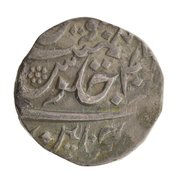
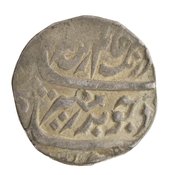
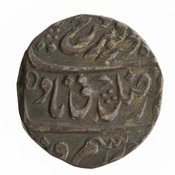
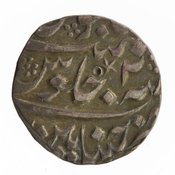
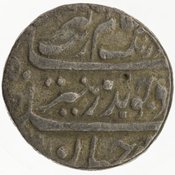
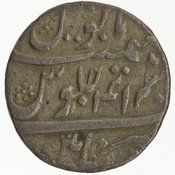
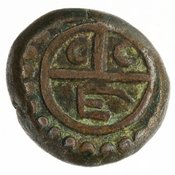
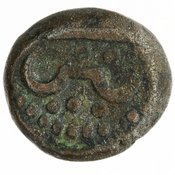
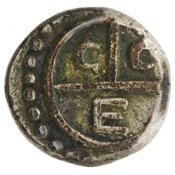
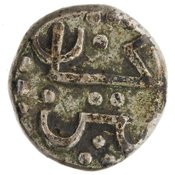
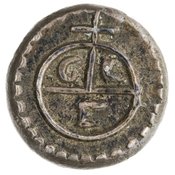
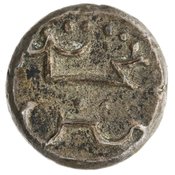
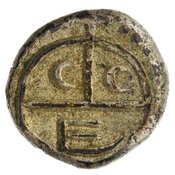
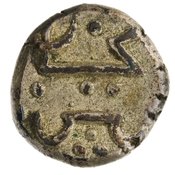
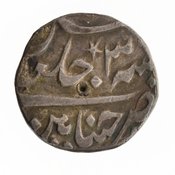
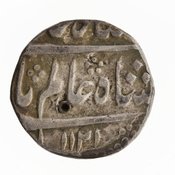
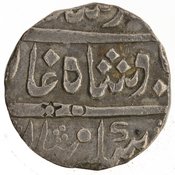
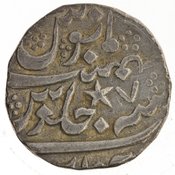

No comments:
Post a Comment